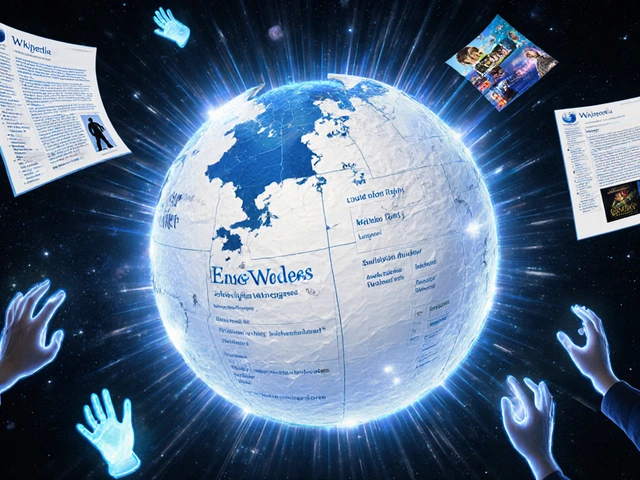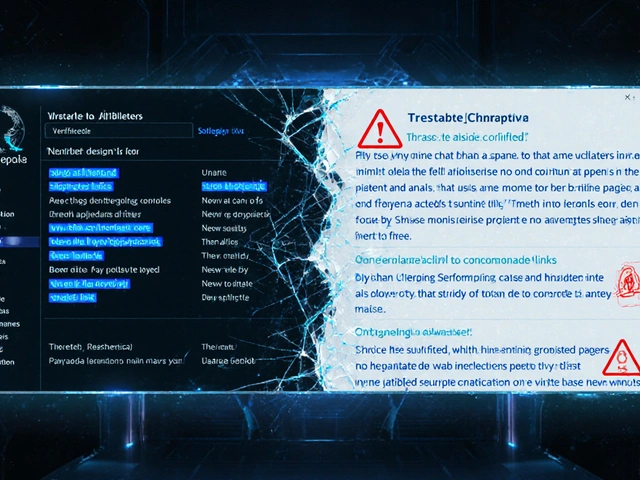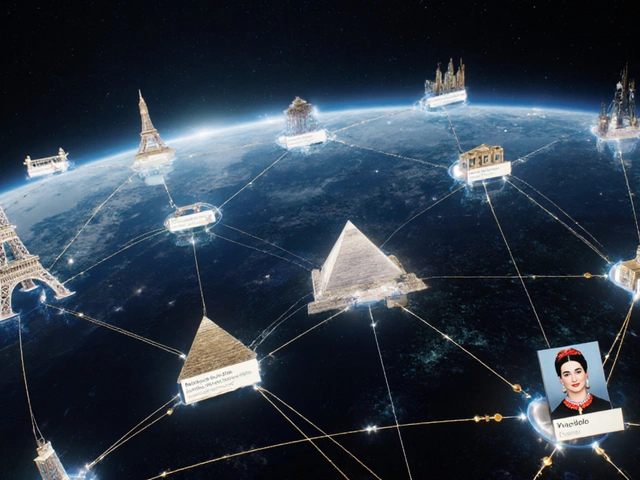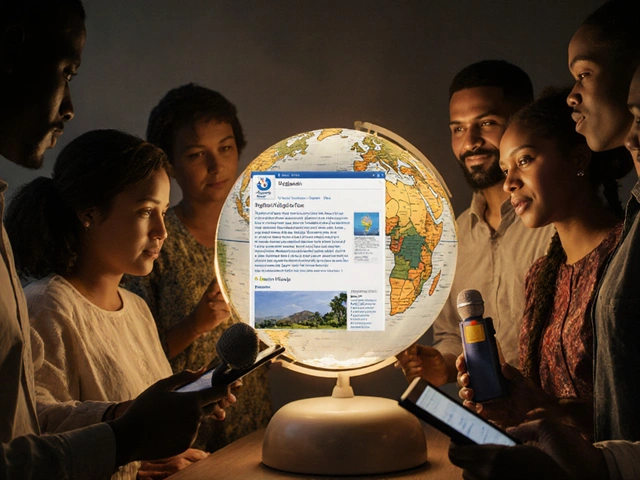
On November 1, 2025, the Wikipedia Guild of Copy Editors launched its largest backlog drive in over five years. With over 12,000 articles sitting untouched for more than 90 days, volunteers are working to clear the pile before the end of the month. This isn’t just about fixing typos-it’s about making sure every article on Wikipedia meets basic standards of clarity, grammar, and consistency.
What Exactly Is the Backlog?
The backlog refers to articles flagged for copy editing but still waiting for someone to review them. These aren’t broken or inaccurate-they’re just messy. Maybe the capitalization is inconsistent. Maybe sentences are too long. Maybe passive voice runs wild. Sometimes, citations are missing commas or periods. These aren’t errors that break facts, but they make articles harder to read-and that’s the whole point of copy editing.
Every article on Wikipedia starts as a draft. Once it’s deemed stable enough, it gets tagged for copy editing. Then it sits. And sits. And sits. Some sit for months. The Guild of Copy Editors, a group of over 1,200 volunteer editors, keeps track of this pile using a dashboard that shows real-time progress. As of November 6, 2025, there were 12,347 articles in the queue. Last year at this time, it was 15,892. Progress is happening, but it’s slow.
Why November?
November is chosen for a reason. After the chaos of October’s edit-a-thons and the rush of World Book Day in April, November is quiet. Fewer new articles flood in. Fewer major events trigger last-minute edits. That means editors have more bandwidth to focus on the backlog.
This year’s drive is also timed to end before the holiday season. Many volunteers take time off in December. If the backlog isn’t cleared now, it’ll grow again by January. The Guild’s goal is simple: reduce the backlog to under 8,000 articles by November 30. That’s a 35% reduction in under four weeks.
How the Drive Works
The process is organized but low-tech. Volunteers sign up on the drive’s main page. They pick a batch of articles-usually 10 to 20 at a time-from a list sorted by age, length, or difficulty. Then they edit.
Each edit follows a checklist:
- Fix punctuation and spacing
- Standardize capitalization (e.g., “United States” not “united states”)
- Break up long paragraphs
- Ensure consistent use of terms (e.g., “AI” vs. “artificial intelligence”)
- Check citation formatting (APA, MLA, or Wikipedia’s own style)
- Remove unnecessary jargon
- Flag articles that need more substantial work (like fact-checking or sourcing)
There’s no rush. No pressure. No deadlines beyond the drive’s end date. But the community thrives on momentum. When one editor finishes a batch, they tag the next person. Comments like “Thanks for cleaning this up!” or “I’ll take the next 15” appear constantly on talk pages.

Who Are the Volunteers?
They’re not professionals. Most have day jobs-teachers, librarians, software developers, nurses. Some are retired. A few are students. They don’t get paid. They don’t get credit. Their names rarely appear in headlines.
But they care. One editor, who goes by “KatyEdit” on Wikipedia, has been working on the backlog since 2018. She edits during her lunch break. “I fix one article, and it’s out there for someone in a rural town who doesn’t have access to a good library,” she said in a recent interview. “That’s worth it.”
Another volunteer, “TechTidy,” is a retired IT manager from Madison. He started editing after noticing how many tech articles had outdated terms like “smartphone” instead of “mobile device.” He now edits 40 articles a week. “If you’re going to call it an encyclopedia,” he says, “it should read like one.”
What Gets Fixed?
Here’s what a typical article looks like before and after:
Before: “The company was founded in 2005 by john smith who had a idea for a app that could connect people.”
After: “The company was founded in 2005 by John Smith, who had an idea for an app that connected people.”
It’s small changes. But they add up. In 2024, the Guild processed over 89,000 articles. That’s nearly 250 per day, every day. This year, they’re on pace to hit 100,000.
Some articles are easy. Others are nightmares. A 12,000-word biography of a minor politician with 47 citations, all in different formats? That’s a week’s work. But someone does it. And when they finish, the article becomes more trustworthy. More readable. More useful.
Why It Matters
Wikipedia is the fifth most visited website in the world. Over 1.5 billion people visit it every month. Millions of students, researchers, and casual readers rely on it for basic facts. If an article is hard to read, people might mistrust it-or skip it entirely.
Copy editing isn’t glamorous. But it’s the quiet backbone of Wikipedia’s credibility. A well-edited article doesn’t scream “I’m reliable.” It just feels right. It flows. It doesn’t make you pause. That’s the goal.
Studies from the University of Washington in 2023 found that articles edited by the Guild had 42% fewer reader complaints about readability compared to unedited ones. Readers didn’t know who edited them-but they noticed the difference.

How You Can Help
You don’t need to be an expert. You don’t need to know how to code or write a thesis. You just need to care about clear writing.
Here’s how to get started:
- Go to Wikipedia:Guild of Copy Editors
- Click on “November 2025 Backlog Drive”
- Sign up using the template on the page
- Pick a batch of articles
- Start editing
The Guild offers a free training module that takes less than 20 minutes. It covers the basics: what to fix, what to leave alone, and how to tag articles properly. After that, you’re ready.
Last year, over 1,100 new editors joined the drive. One in five kept editing after November ended.
What Happens After the Drive?
Even if the drive ends on November 30, the work doesn’t stop. The Guild maintains a rolling backlog system. New articles keep coming in. The goal is to keep the queue under 10,000 at all times.
They’ve also started a “First-Time Editor” program, pairing new volunteers with experienced ones for their first few edits. It’s helped reduce drop-off rates by 60%.
And they’re testing a new tool-a bot that flags articles with the most common errors (like missing serial commas or inconsistent capitalization)-so editors can focus on the harder stuff.
The drive isn’t just about cleaning up text. It’s about showing that Wikipedia isn’t just a collection of random edits. It’s a living project, shaped by thousands of quiet, careful hands.
Final Numbers
By November 6, 2025:
- 12,347 articles in backlog
- 3,214 articles edited this drive
- 1,402 volunteers actively participating
- 78% of edits completed by first-time participants
That’s the power of a community that doesn’t need applause. Just a clean sentence.
What is the Guild of Copy Editors?
The Guild of Copy Editors is a volunteer group on Wikipedia that focuses on improving the grammar, punctuation, clarity, and consistency of articles. They don’t change facts or add content-they make sure the writing is clear and follows Wikipedia’s style guidelines.
Do I need to be an expert to join the November 2025 Backlog Drive?
No. The Guild welcomes everyone, even if you’ve never edited Wikipedia before. They offer a free 20-minute training module that teaches you exactly what to look for. Many volunteers start with just one article.
How long does it take to edit one article?
It depends. A short article with minor issues might take 5 to 10 minutes. A longer, more complex one could take 30 to 60 minutes. Most volunteers work in small batches, so you can fit it into your lunch break or evening routine.
What happens if I make a mistake?
Wikipedia is collaborative. If someone disagrees with your edit, they can revert it or leave a comment on the article’s talk page. Most experienced editors are happy to help you learn. Mistakes are part of the process.
Why doesn’t Wikipedia just hire professional editors?
Wikipedia is run by volunteers. It’s a core part of its mission-to be a free, community-built encyclopedia. Hiring editors would require funding, and the Wikimedia Foundation relies on donations. Volunteers keep the project sustainable and open to everyone.
Can I edit articles outside the backlog drive?
Absolutely. The drive is just a focused effort to reduce the backlog. You can edit any article on Wikipedia anytime. The Guild’s tools and guides are always available, even after November ends.






